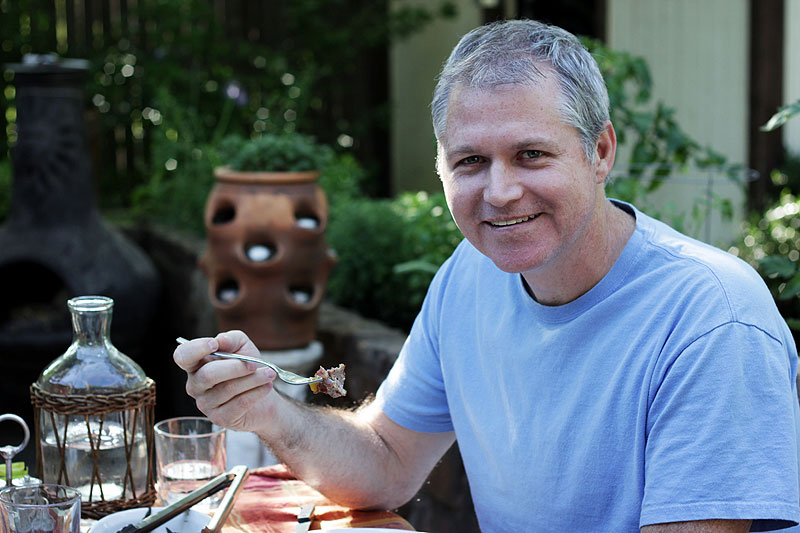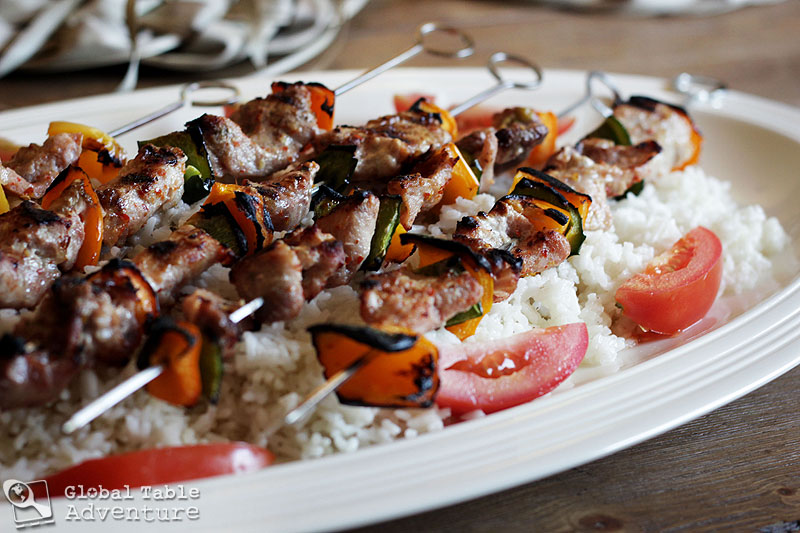As Ava scuttles off to the zoo with her grandmother, I stay behind to wrangle alligator for the first time. While she walks between the lanky giraffes and prowling tigers, seeking a tail-slinging alligator of her own, I coat ours with a bright layer of lemon piri piri sauce and pop it in the refrigerator for a few hours. As she watches the lions, padding their way around their enclosure, scanning the perimeter, looking for a way out – wondering where the rest of Africa is – I place a loaf of Veldt bread in the shimmering oven. Ava looks at the animals curiously but not exactly afraid. Not like she would be if she ran into them in the actual wilderness. She is an observer but not a participant in the scene. But things could be different. Last week I was confronted with a sordid, disturbing tale called The Veldt by Ray Bradbury from the 1950’s written about the veldt in southern Africa. The term veldt is a lot like the term outback – it’s the way-out-there land, …
Read More
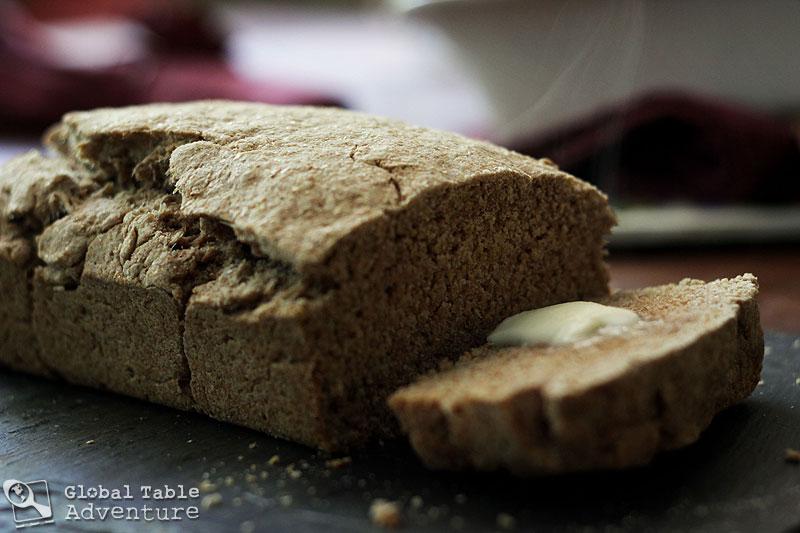
Today we’re traveling to the sandy, dusty plateaus of of Southern Africa where you’ll find the Veldt – large expanses of wilderness, often filled with scrubby bushes and the occasional scraggly tree. Here, too, you’ll find prowling lions, circling scavenger birds, and hearty veldt bread – which pretty much means bread of the wild. According to the World Cookbook for Students, this quickbread was created by European settlers as a way to nourish themselves with familiar ingredients in an unfamiliar land. Since it’s leavened with baking powder, there’s no long rise time – just pop in the oven (or over a campfire) and chow down. No muss, no fuss. Spices like ginger, cinnamon and cloves give this rugged, dense “wheaty” bread a lovely lift. Much like Irish soda bread, Veldt bread tastes best when steaming hot, slathered with butter. So go ahead, set up camp by a Namibian sunset and enjoy a slice. Makes 1 loaf Ingredients: 3 1/2 cups whole wheat flour 1 1/2 tsp baking powder 1/2 tsp salt 3 Tbsp brown sugar 1/2 …
Read More
In the muddy waters of Namibia you can find all manner of crocodile. They are both hunted and hunters, so it’s best to keep your wits about you if you find yourself in their snappish company. Since I live in the part of the world where alligators roam (or very near to it, as they can be found in Georgia, just a couple of states away), I made this quick substitution for this traditional Namibian bushmeat. If you’d like to know the difference between a crocodile and an alligator, I’ve been told it’s in the shape of the snout. Otherwise, it is rumored, the taste (and bite) is the same. So let’s stove top travel our way to the hot Namibian sun and find ourselves some bushmeat for summer grillin.’ NOTE: I purchased alligator at Harvard Meats, our local meat market (that’s also where we found kangaroo for our Australian Global Table). Call around and see if any near you have alligator (most likely frozen, unless you live in the deep south). Makes about 6 skewers Ingredients: …
Read More
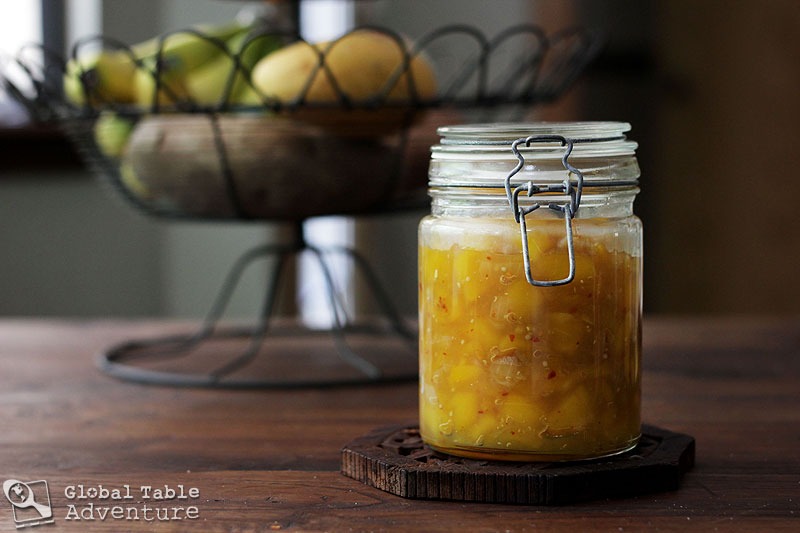
Sometimes life throws us some pretty major “boulders” – huge, overwhelming problems we can’t seem to solve, let alone nudge out of the way. In Namibia, you can find a lot of these boulders, literally. Strangely out of proportion, these massive stones perch atop bald, widswept vistas. I like to think of these formiddable boulders as mangoes. Yes, mangoes. Something that, if given enough time, will soften and sweeten and delight you. Why can’t all problems be this way? Today’s recipe combines three beloved Namibian ingredients: mangoes, ginger, chili pepper flakes. The resulting chutney tastes great with meats, veggies, breads… you name it. It’s quite sweet, vinegary, and mildly spicy. You can add fresh minced chili peppers to increase the heat to sweat-inducing levels, if you’d like. Makes 1 quart Ingredients: 4 cups cubed mango 1/2 cup white wine vinegar 1 cup sugar (less if your mangoes are very sweet) 1 small onion, chopped 1 tsp fresh ginger 1/2 tsp red chili pepper flakes (or more to taste) 1/2 tsp mustard seed (I had …
Read More
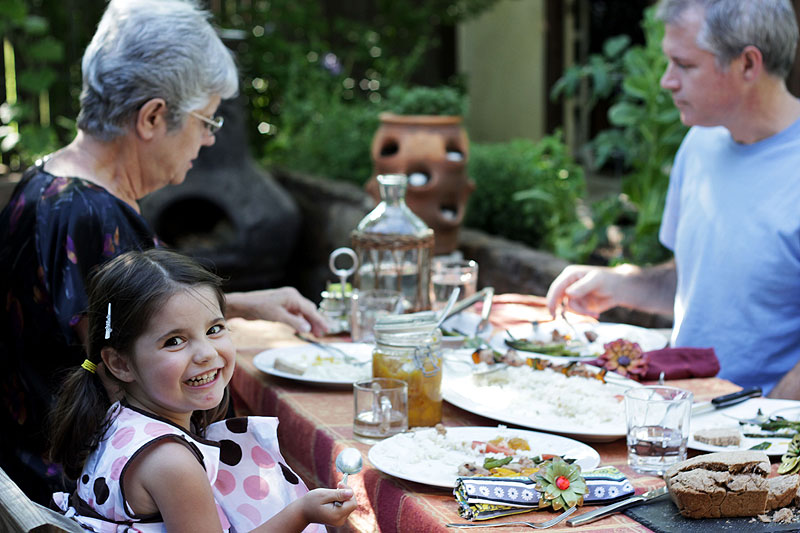
This week we’re celebrating two awesome, wonderful, happy, lovely things. 1) We’re in the “N” countries… finally! It’s been nearly 2 1/2 years of cooking food from every country in the world and here we are! Namibia is a great place to start, too. This menu combines something new (alligator), with the rustic (Veldt bread) and a dash of sass (mango chutney). If that doesn’t sum up the spirit of this adventure, I don’t know what does 2) My husband was promoted to a new fancypants position at his company. It’s long since overdue. We’re fairly sure this means he has to stop wearing superman shirts, except for on the weekends. We shall see. What sounds good to you?* An Alligator’s Bite (Bushmeat Skewers) [Recipe] In Namibia Crocodile reigns supreme. Since we can’t get those in Tulsa, Oklahoma we’re cooking up the (incredibly similar) alligator. Just marinate with piri piri sauce and thread with peppers on skewers. Bread of the Wild (Veldt Bread) [Recipe] Dense whole wheat quickbread made with cinnamon, ginger, and cloves. A rustic …
Read More
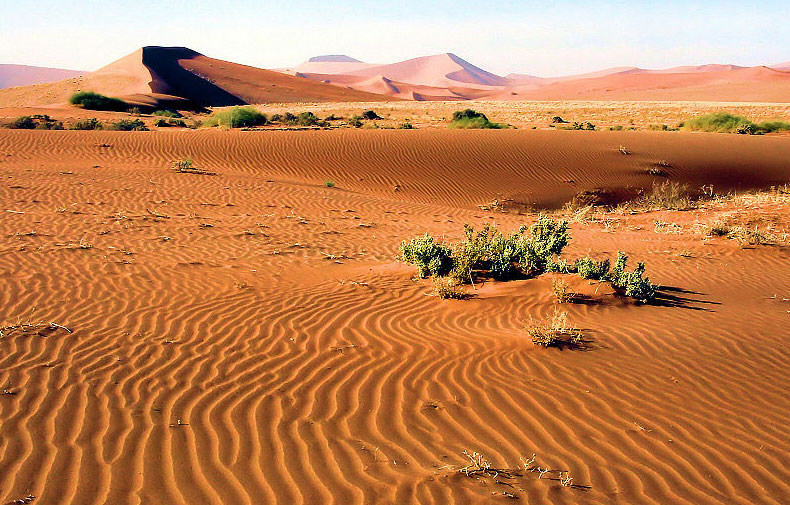
Not that you’d really believe you were in Germany while gazing upon the vast deserts of Namibia, but quite a few things might make you wonder – especially closer to the coast. For starters, German words are everywhere, from the names of towns, to the distinctive brats and beer on the tables. Lüderitz Port, for example. Could that be any more German? If you dig in a little deeper, however, you’ll enter the Veldt or the wide open scrubby expanses. In this space, times moves more slowly. Dust hangs in the air where lions, giraffes, and zebra roam. Here, the food is much simpler. An entire meal might be made from bushmeat, such as crocodile [Recipe using a local substitute, alligator], or prized lamb meat. Vegetables would include simple stewed greens. Seasoning might consist of nothing or it might be piri piri sauce, bright with lemon juice and spicy peppers. Food can also be amped up with a sweet and spicy chutney [Recipe]. Deeper into the heart of Namibia you may experience dense quickbread called Veldt (named …
Read More

